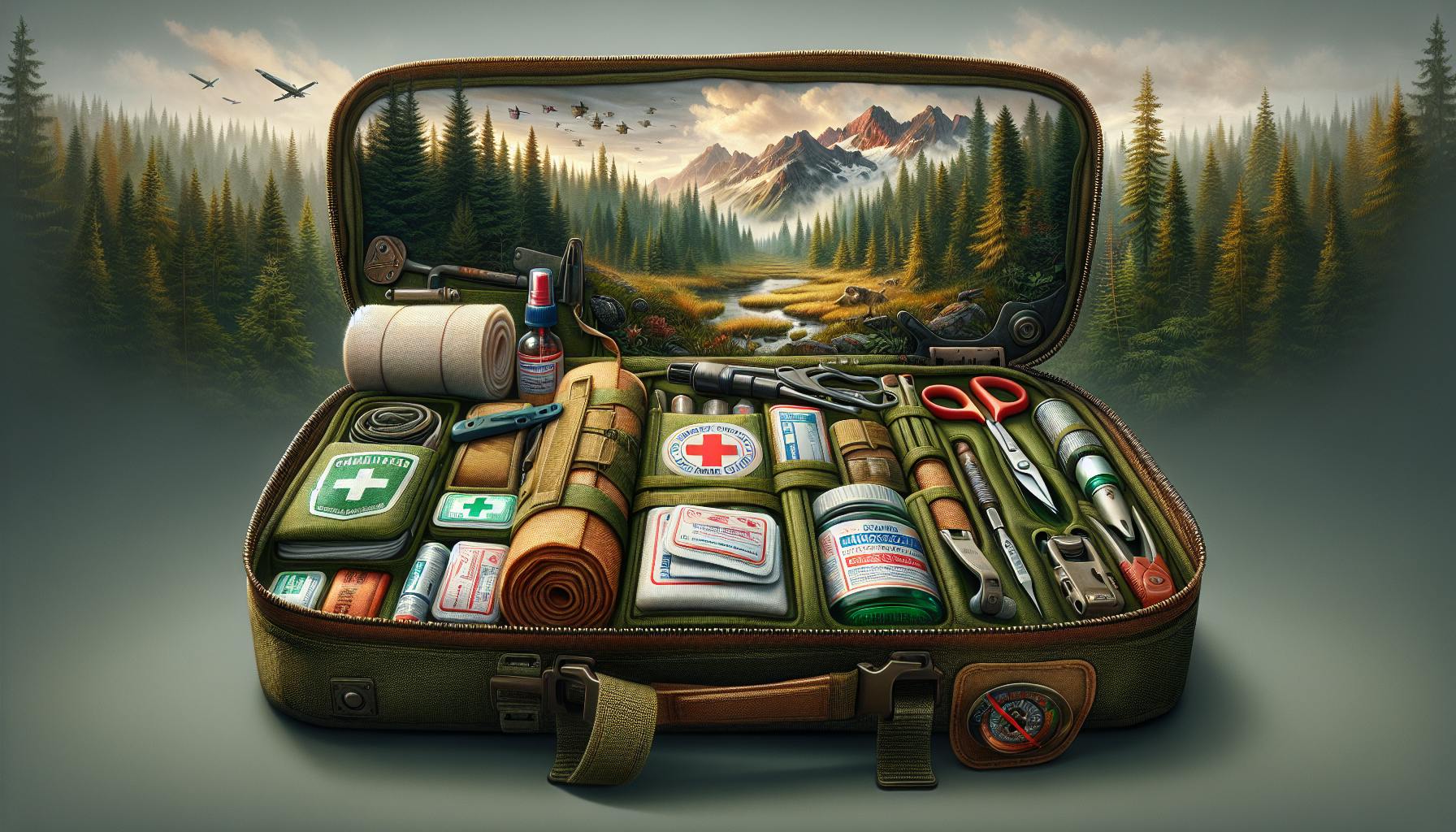Why Preparedness Matters Now More Than Ever
Recent years have seen an alarming rise in natural disasters, global conflict, infrastructure breakdowns, and economic volatility. Events like the COVID-19 pandemic, supply chain disruptions, Texas power grid failure, and worsening storms have highlighted society's vulnerability. According to FEMA, declared disasters increased by 233% over the past 20 years. With risks growing, being prepared with practical survival supplies provides much-needed peace of mind. As preppers, we aim to be self-reliant and ready to handle any crisis by having versatile tools, gear, and skills at the ready.
While the core fundamentals remain constant, new prepper gear innovations emerge each year that are worth evaluating. At minimum, it's wise to take inventory of supplies annually and replenish any expired or outdated items. Beyond basic survival, proper gear enables us to weather disasters in relative comfort and maintain a sense of security. In this article, we'll explore must-have prepper gear essentials across key categories like survival kits, water and food, shelter, safety, power, and more.
Build Comprehensive Emergency Survival Kits
Survival kits should contain a balanced selection of gear to meet basic needs like shelter, water, food, first aid, fire, lighting and communication. Compact, portable all-in-one kits are ideal for home, office, vehicle or bug out bags. Alternatively, DIY custom kits allow tailoring supplies to your specific needs, regional risks, and budget. Ready-made kits offer convenience, while self-assembled ones give you more control over quality and contents. Essentials include:
- Water pouches or bottles, water purification tablets
- Freeze-dried, dehydrated, MRE or canned food rations
- First aid supplies - bandages, ointments, medications
- Fire starting tools - matches, lighters, tinder, flint
- Flashlights, headlamps, batteries
- Multitool, knife, paracord, duct tape
- Emergency blankets, hand warmers
- Face masks, protective goggles
- Portable stove, mess kit, utensils
- Offline maps, compass, radio, chargers
- Cash, copies of documents
Top recommended brands for survival kits include Uncharted Supply, Survival Frog, Acme Approved, and Emergency Zone. Choose based on your budget, risk factors, and desired customization.
Communications and Navigation Are Critical When Disaster Strikes
When disasters strike, being able to receive alerts, connect with loved ones, and navigate are crucial capabilities. Radios, satellite communicators, signal boosters and offline maps enable self-reliance if power and cell networks go down. Standalone devices like two-way radios, GPS units excel at specific tasks, while multi-tools and smartphones handle a wider range provide broader functionality. Ideal features include durability, long battery life, solar charging, and increased range.
Recommended options:
- Two-way radios: Motorola, Midland, DeWalt, Cobra
- Satellite communicators: Garmin inReach, Somewear Labs, Zoleo
- AM/FM emergency radio: Midland, Anthon, Cobra
- Navigation apps: Gaia GPS, ViewRanger, Google Maps offline
- USB power banks: Anker, Goal Zero, BioLite, Surge
Water Access Is an Absolute Necessity
Store at least 1 gallon of water per person daily, and have multiple methods of collecting, filtering, and purifying water. Portable pumps effectively filter from lakes and streams, while straws serve as convenient personal use options. Water purification tablets, bleach, iodine provide chemical treatment for stored water and questionable sources. For heavy use, gravity filters with replaceable cartridges offer high capacity. Compare flow rate, filter size, effectiveness against viruses/bacteria when selecting systems.
Top models include:
- Pump filters: Katadyn Hiker Pro, Survivor Filter Pro, MSR MiniWorks
- Straws: LifeStraw Personal, Sawyer Mini
- Gravity filters: Platypus GravityWorks, MSR AutoFlow
- Purification tablets: Potable Aqua, Aquatabs, Katadyn
- UV purifiers: SteriPEN Adventurer, Survivor Filter Journey
Maintain and store systems properly, replace filters, and use water treatment chemicals as directed. Consider redundancy with both filtering and chemical purification available.
Stockpile Nutritious Emergency Food and Cooking Gear
Stock nutritious emergency food with long shelf lives like freeze dried, dehydrated, MREs or canned goods. Focus on calorie density, nutritional balance, and sufficient variety for morale. Tailor supplies for short-term (3 days) and long-term (2 weeks+) needs. Essential cooking gear enables heating food and boiling water on the go, including portable stoves, cook pots, utensils, cups and plates.
Recommended brands include:
- Freeze dried: Mountain House, Wise Company, Augason Farms
- Dehydrated: AlpineAire, Backpacker's Pantry, Harmony House
- MREs: SOPAKCO, DATREX, Sure-Pak
- Portable stoves: Jetboil, MSR, Coleman, BioLite
Consider food allergies, dietary needs and mapping out balanced meal plans. Also have a supply of multivitamins and medications on hand. WeLovePrepping offers a huge selection of long-term emergency food kits with delicious flavors and 40+ year shelf lives.
Shelter Gear Provides Protection From the Elements
When disaster strikes, shelter provides critical protection from the elements and environment. Durable tents, tarps and emergency tube tents enable temporary shelter. Insulating sleeping bags and pads lend warmth and comfort. Paracord, Mylar blankets, and fire starting supplies also prove useful. Key features include waterproofing, wind resistance, packed weight and size.
Recommended brands include:
- Tents: ALPS Mountaineering, Coleman, Kelty, MSR
- Tarps: Ultimate Survival Technologies, ROOTS, Friendly Swede
- Sleeping bags: TETON Sports, Hyke & Byke, Coleman
- Paracord: Paracord Planet, X-Plore Gear, ROTHCO
Shelter tools like folding shovels, saws and multi-tools allow DIY shelters. Having the essential gear to create basic shelter will provide safety and relief when you need it most.
Gear Up with Essential Safety and Security Prepper Supplies
When crisis strikes, our physical safety and security become paramount. Gear to treat injuries, illuminate darkness, power devices, defend against threats, and start fires provide protection. Tailor supplies to likely risks in your region, from natural disasters to civil unrest. Also prepare home, office, vehicle and bug out kits for redundancy. Check and replenish dated gear like medications annually.
Outfit Your First Aid Kit for Trauma and Survival
A diverse range of trauma, medication, tools and instructional resources allow treating injuries when professional medical aid is unavailable. Essentials include gauze, bandages, ointments, instruments, sutures, OTC meds, first aid handbook. Compare pre-packaged kits versus building a custom trauma-oriented kit. Recommended brands include Adventure Medical Kits, Surviveware, Rescue Essentials, and Everlit.
Take first aid, Stop the Bleed, CPR, and wilderness medicine training to properly utilize supplies. Knowledge and skills are just as crucial as the gear itself.
Illumination and Power Are Scarce Commodities When Off-Grid
When the grid goes down, lighting and electricity become scarce commodities. LED flashlights, headlamps, and lanterns provide illumination. Power banks, generators, and solar panels enable recharging devices and batteries. Key features include brightness, battery runtime, durability, and charging capacity. Reliable lighting brands include Streamlight, Olight, Fenix, and Pelican. Top portable power options are from Jackery, Goal Zero, Anker and Renogy. Have redundancy across multiple lighting and power sources.
Defensive Tools Provide Protection for Your Family and Home
During collapse scenarios, firearms, pepper spray, batons, and blades provide personal protection for your family and home. Obtain proper training and act responsibly when owning defensive weapons. Suitable options include:
- Pepper spray: Fox Labs, Sabre, POM
- Batons: Monadnock, ASP, Smith & Wesson
- Firearms: Glock, Smith & Wesson, Springfield, Ruger
- Knives: Gerber, KA-BAR, Cold Steel, ESEE
Also stock protective gear like ballistic plates, helmets, goggles, gloves and masks. Be prepared, not paranoid, with smart security and defense.
Durable, Protective Clothing and Footwear
Invest in durable, protective apparel and footwear providing warmth, waterproofing, and abrasion resistance. Wool, synthetic, and leather materials hold up best. Have gloves, goggles, masks, hats and cold weather accessories as well. Top brands include Carhartt, 5.11 Tactical, Arc'teryx, Danner, Merrell, Columbia, Smartwool, and HighRock. Pack multi-use, quality attire minimizing space while maximizing utility.
Fire Starters Enable Critical Capabilities When Off-Grid
Fire enables warmth, light, cooking and signaling during emergencies. Have multiple methods of ignition including lighters, matches, flint strikers, and tinder. Store in waterproof containers along with kindling materials and fire starting aids like petroleum jelly. Recommended gear includes Überleben Zünden fire starters, Light My Fire products, Zippo lighters, and UST blast matches. Practice fire skills regularly to maintain readiness.
Maintain and Enhance Your Prepper Gear Over Time
To keep your critical prepper gear performing when needed most, regularly inspect, test, and refresh supplies. Replace expired medications, food, water and dated items that degrade over time. Upgrade gear as innovative new tools emerge, balancing proven staples with cutting-edge technology where appropriate. Take inventory of strengths and gaps in your capabilities.
Leverage Training Resources and Local Prepper Networks
Enhance skills through books, online resources, professional instruction, and local prepper networks. Recommended references include the SAS Survival Handbook, Bushcraft 101, Where There Is No Doctor, and FM 21-76 Survival Manual. Several reputable training providers offer medical, security, survival and homesteading courses as well. Joining local prepper meetups provides community and knowledge sharing.
Assemble Customized Kits Based on Your Needs and Region
Evaluate likely risks and essential needs, research ideal tools, and compile supplies accordingly. Strive for redundancy, multi-functionality and portability. Organize gear systematically for quick access. Maintain detailed checklists of contents and locations, with reminders to replace perishable items. Download free templates online to track and inventory your prepper supplies.
Stay Informed on Prepper Gear Innovations and Best Practices
Follow prepper news sources, influencers, gear manufacturers, and product releases to stay current on promising innovations. However, balance new tech against tried and true basics, appropriately weighing novelty versus utility. Useful gadgets that improve communications, navigation, shelter, water access and other critical functions are worth considering if sufficiently durable and reliable.
Share Skills and Compare Gear with Prepper Communities
Connect locally and online with like-minded individuals to exchange ideas, resources, and skills. Arrange training exercises, conduct meetups to inventory and compare gear hands-on. Volunteer expertise to mentor and assist others in shoring up preparedness. Discuss innovations and scenarios to help each other identify potential capability gaps. A sense of community and support goes a long way in managing uncertainty.
Conclusion - Be Proactive With Prepper Gear for Self-Reliance
Being prepared allows us to face uncertain futures with confidence through self-reliance. Ensure you have well-stocked kits for survival, first aid, food, water, shelter, lighting, power and security tailored to likely risks. Inspect and replenish gear routinely, upgrade judiciously, and diversify critical supplies. Share knowledge and training with local networks. With practical tools and resources, we can provide for our families while promoting community resilience. Stay vigilant, informed, trained and ready to tackle the unexpected.


